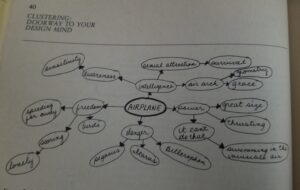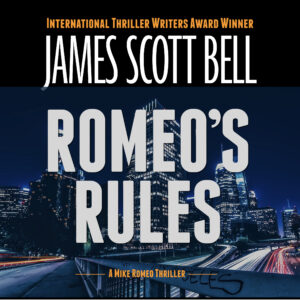by James Scott Bell
@jamesscottbell
 A pole vaulter doesn’t come out of the locker room, pick up a pole, and get to vaulting. Like all athletes, they warm up. They do some stretching, some sprinting, test the poles, do a few practice vaults.
A pole vaulter doesn’t come out of the locker room, pick up a pole, and get to vaulting. Like all athletes, they warm up. They do some stretching, some sprinting, test the poles, do a few practice vaults.
That’s how writers should view morning pages. They warm you up so you can reach new heights when you write. The subject has come up in comments several times here at TKZ, so I thought I’d offer some of the different ways I’ve personally done morning pages.
Bradbury’s Landmine
The great Ray Bradbury, in his book Zen in the Art of Writing, said of his morning pages: “Every morning I jump out of bed and step on a landmine. The landmine is me. After the explosion, I spend the rest of the day putting the pieces together.”
He explained that by writing down what was in his brain the first thing upon waking, was capturing whatever dreams had percolated, or whatever his subconscious decided to tell him. He didn’t try to make sense of it as he wrote. The idea was to pour it all out, see what was there, and only then look for a story possibility.
Robert Louis Stevenson often got plot ideas in his dreams. In the wee small hours one morning, his wife was awakened by cries of horror from her husband. Thinking he was having a nightmare, she wakened him. He angrily said, “Why did you awaken me? I was dreaming a fine bogey tale!” He got up and began writing Dr. Jekyll and Mr. Hyde.
Natalie Goldberg’s Non-Stop Writing
In her book Writing Down the Bones, Natalie Goldberg advocates “writing practice” before getting to your WIP. You simply pick a starter (like “I remember…” or “describe the light coming through your window,” or “write about an early memory”) and just go without stopping, without editing, without judgment. Follow wherever your writing leads you. The idea is to learn to free yourself up as you write anything.
Additionally, Goldberg advises doing this exercise for distinct moments in your fiction—especially description. You come to a point where you’re going to describe a character, or place, or clothing…whatever. You pause and open a new document and write for five minutes on that one thing, letting your mind feed you images and metaphors. (Now there’s AI to do that work for you. Personally, I don’t like that. Using our own neural networks exercises our brains…which we need if for nothing else than to fight the machines!)
Julia Cameron’s Morning Pages
In The Artist’s Way, Julia Cameron describes morning pages as “three pages of longhand writing, strictly stream-of-consciousness.” Even though my handwriting is awful, I think there is something to using pen or pencil on paper that exercises parts of your brain not normally brought out to play.
My variation on this is to do page-long sentences. No worries about grammar or punctuation, just letting one word lead to another and following any rabbit trail that comes up. It’s all about loosening up the creative muscles before the pole vault of your WIP.
Writing the Natural Way
In Writing the Natural Way, Gabriele Lusser Rico champions “clustering” as a way to unleash the right brain. Clustering is also known as mind mapping. You use a pen or pencil on blank paper, and start with a word or phrase in the middle of the page. Put a circle around it. Then start putting down words that connect to the main word, and connections from the new words, until you have a whole page of circled words or phrases with lines between them.
Let the map sit for awhile, then bring some form to it. I put numbers by certain words in priority order. I find this especially helpful when I’m mapping out a nonfiction article or book. It results in a usable outline. But I’ve also used this for big scenes in my novels.
Micro and Flash Fiction
Use a writing prompt to write a short-short story. Flash fiction is under 1k words; micro fiction is under 250 (though some purists make it under 100). I’ve written before about Storymatic. There’s also Writer Igniter that shuffles various elements for you.
Think about the prompt for a minute or two. You may stay with it, or you can tweak it. There’s no wrong way to approach this. I try to envision an opening scene and an ending to work toward. Then I write it. I share the best of these on my Patreon page. But even the ones I don’t use are of benefit, as the value of this exercise is in the effort.
Sue Grafton’s Novel Journal
The author of the famous alphabet series featuring PI Kinsey Millhone, Sue Grafton, began each writing day by jotting in what she called her novel journal. She’d first put something down about how she felt that day, and then record any ideas that occurred to her “in the dead of night, when Shadow and Right Brain are most active.” Finally, she’d reflect on where she was in the book, ask What if? She’d write down many possible directions, and assess them later. (No surprise she was a pantser…but this also works for plotters, who can fill out details in scenes, deepen emotions, find happy surprises, including metaphors.)
So, ready to jump into your writing day? Warm up with morning pages, then set your bar high.
What are your thoughts on morning pages?
A note for you audio book fans. Romeo’s Rules, the first book in my Mike Romeo thriller series, has just come out in audio.



I do a combination of the above. I write in my journal almost every morning- snippets of dreams, now I felt about yesterday’s events, etc. when I want to delve into a character’s psyche , I write in my journal from my character’s perspective . I’ve also used photos for writing prompts when I’m feeling dry.
I’m curious to hear how Romeo sounds IRL. Who did your narration?
Jane, my friend James Rubart, an award-winning author in his own right, did the narration.
🙂 Awesome choice!
My good friend as well!!!
I (try to), use Bradbury’s “create a list of 10 nouns” every morning… sometimes what I see in the immediate surroundings of starting the day… but other times just a stream of consciousness list of related items – a sort of mind-mapping without the circles and lines…
Here’s something that describes, in some of his own words, that process, along with some of his results:
https://www.themarginalian.org/2013/10/18/ray-bradbury-on-lists/
As to mind-mapping itself, I use it to “woodshop” a song title or expanding on a line or two that suggest one thing that just won’t come together, and find it opens more doors than I realized were there, let alone closed… typically takes about 10 or 15 minutes…
The point being, get the ink flowing and the creative juices will follow…
Thanks for mentioning Bradbury’s noun list. I have compiled one myself. In fact, one of them inspired a story that I published. Search Amazon for B081THHSYL
“My Father’s Birthday.”
I actually did a blog post on this yesterday.
I’ve found over the years that Julia Cameron’s 3 pages of longhand writing works best for me. The first half page to a page is usually practical stuff: how I slept, how yesterday’s to-do list worked out, The next half page or so is what’s coming for today (call the vet, get ready for a meeting, pay the dentist). Then, when all that’s out of the way, if I need guidance I ask for it and that takes me up to 3 pages.
I like that approach, Cynthia.
I write my morning pages (Julia Cameron) every morning. ❤️
Nice!
If I ever do actual morning pages instead of chatting with one of my writing buddies, doing the mini-Cross (and the regular on M-T-W), Tiles, dealing with email and responding to my favorite blog sites, I’ll keep these in mind.
I can’t type for at least 2 hours after I get up, and when I’m working on the WIP, any other writing sends “YOU SHOULD BE WORKING ON THE WIP” messages to my brain.
I’m leaving for Left Coast Crime tomorrow; maybe I’ll try morning pages while I’m there, assuming I have free time.
We do have to attend to our personal rhythms, Terry. Have fun at the conference. May you pass out a lot of lip balm.
I did order more lip balm. 🙂
Thanks, Jim, for a review and discussion on the many ways to do morning pages.
My brain, during the night, tends to work on ways to improve my story line. So, in the morning I open my expanded outline and find the places where my nonsleeping brain was suggesting changes or fixes for plot holes. I then write a paragraph or more to get the juices flowing and my fingers flying, discussing the idea and making notes to myself where I will need to make other changes to accommodate the change I just made.
After a review of a long list of possible titles and possible opening paragraphs, my brain is picking up momentum and ready to spray a stream of words onto the screen.
Oh, I almost forgot to mention. One of the best ways to do morning pages is to read the Kill Zone blog and respond. An exercise in creativity and entertainment.
Carpe typem!
Excellent use of the shadow part of the brain, Steve. And yes, the interaction here at TKZ is a stimulant all its own!
Very thorough coverage of the concept, JSB. I never realized so many well-known writers did morning pages.
I did morning pages for several months about 30 years back. I found I was waking earlier and earlier to do them, and wasn’t able to go back to sleep. Fortunately, I was living in a condo with a pool, so about 3 a.m., I’d sneak down, swim a few laps, then soak awhile in the adjacent hot tub. After that, I could easily sleep until dawn.
Later, the condo improved their gate latches, and I couldn’t always get in. About the same time, the pages acquired a dark tone, and I thought it best to discontinue them. I’ve never taken them up again. I find it more productive to use Bradbury’s method of developing whatever word or phrase comes to me from the boys in the basement, as I did for Olivia’s Story, mentioned yesterday.
I do record any significant dream on a pad by my bed, then type it into a DOC file when I rise. Dreams are often useful messages from the Unconscious, telling me what is going on at that level.
It’s good that you had that self-discovery, and found the best way for you to do morning pages. Specializing in fiction fodder is my best practice as well.
I devoured Natalie Goldberg’s “Writing Down the Bones” while I was in college, and used her practice techniques in my early fiction, finding it freeing. Later, I discovered Julia Cameron while working at the library–I think a patron recommended the book to me and her morning pages for a time. I dipped into “Writing the Natural Way,” but didn’t go deeply into it. I tend to be project oriented.
I did take Bradbury’s landmine approach when writing flash–and produced a lot of it back in 2008-15, seeing it published in various magazines, but also writing it because of that landmine. When it “succeeded” it was because I didn’t attempt to control the process of creation.
Novel pages are my morning pages. I start most mornings writing in my novel journal, mostly talking to myself about a problem in the book, or where I’m at, or how I feel. It is so very helpful.
Fantastic, Dale. I track right along with you.
As Steve mentioned, my morning page is TKZ. Reading the daily post is a great warmup stretching exercise. Topics tackle myriad problems I’ve had to work through. Or they offer a different perspective of that problem that breaks the logjam.
If there’s a compelling question up for discussion, the waking brain tries to come up with an answer or comment that others might find helpful. Sometimes the brain isn’t quite working. Solution–more coffee.
That readies me for the working day and I’m off and running.
Yeah, coffee is the solution for a number of things!
Nicely put, Debbie. The whole point of any of these exercises is to get “off and running.” Ready, set, type!
Kind of like putting the “Ready, Fire, Aim” approach into practice…
Exactly.
Hey, Jim, this is so timely for me! I don’t have the time right this minute, but I’m going to glean through this later.
I actually planned to do a search of our archives this week for anything on morning pages, or contact you for it, because I recently decided to add this to my daily schedule.
Woot! Thanks!
🙂
Timing! It’s what we’re about, Deb.
Like Steve and Debbie, I use TKZ as my morning journal. Then I usually read and respond to a few other blogs before getting down to work.
I was interested in Julia Cameron’s recommendation for writing by hand in the morning. I wrote a TKZ post on the subject of handwriting vs. typing a while back:
http://killzoneblog.com/2022/10/handwriting-versus-typing.html
and I noticed a difference in my thought process when I was using longhand. I may try Cameron’s morning exercise routine in handwriting calisthenics.
Thanks for the link, Kay. It adds nicely to the discussion.
I don’t free write in the morning, but it’s definitely my most productive writing time. No checking email, no worrying about the to-do list. Just slide on my headphones and write. Bliss. From conditioning myself to write first thing in the morning, I wake up with new ideas for the WIP. It also helps if you go to sleep thinking about the scene you’re on.
It’s great when we experience that bliss, isn’t it, Sue? And flow.
I do find that when I write a Nifty 350 in the morning, it makes the rest of my writing day go smoothly.
I agree on the value of morning pages but there is so little free time in the morning before work starts that morning-anything is a no-go (and I am an early riser). But one of these days if I ever get to see retirement I’m finally going to manage mornings MY way with morning pages and morning writing! 😎
As others have mentioned above, my one outlet for creative brain in the morning is reading the TKZ post of the day. Otherwise, in the less optimal hours of evening, or weekend snatches I do my writing, and it’s a bonus when I have time to write by hand because there is just something about that which lets me explore a little more than with keyboarding.
It’ll be nice to be in charge!
For any who may enjoy doing visual art in addition to writing, JSB’s post today gave me another brainstorm to throw out there:
If you like to draw, you’ve probably heard of “Inktober” – started back around 2009 using daily word prompts each day of October to give you a word to focus on as you practice your drawing skills.
In addition to the month of October, if you sign up to receive their email notice, each week of the year you receive a word prompt for the same purpose–to stoke your creativity & prompt you to practice your drawing skills (and they also share in the email some awesome drawings some of their participants have done–very inspiring!).
So if you enjoy both writing and visual art, you can kill 2 birds with one stone and use the Inktober word of the week to free write as well as draw. And since TKZ is a site for mystery/thriller/suspense writers, I thought the current week 10 prompt word was quite appropriate to free write from: “frame”. 😎
Thanks for passing that along, BK.